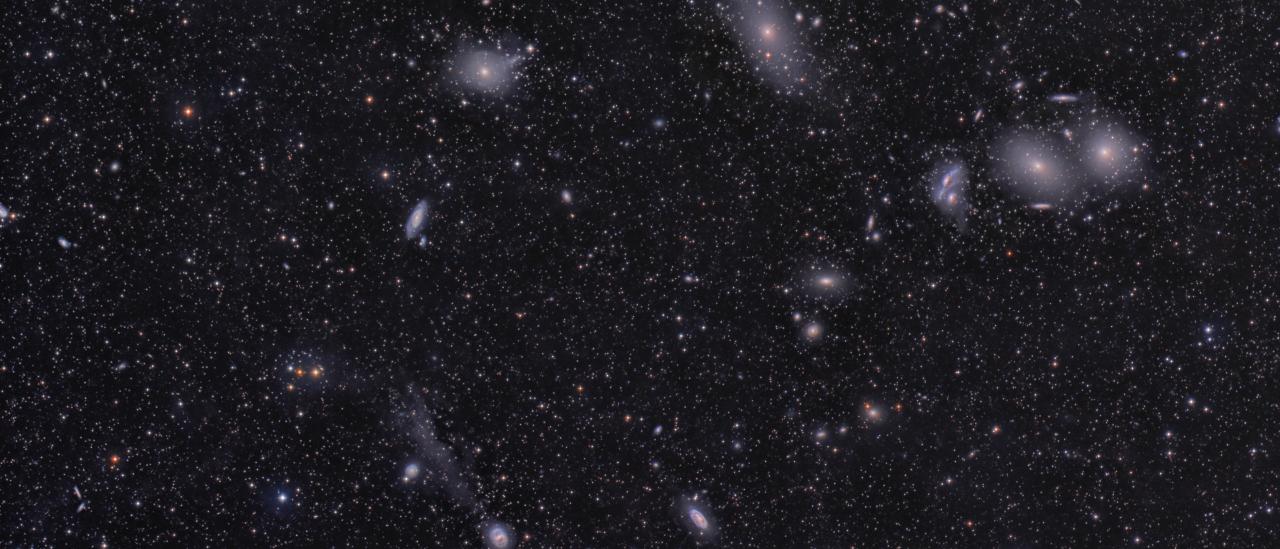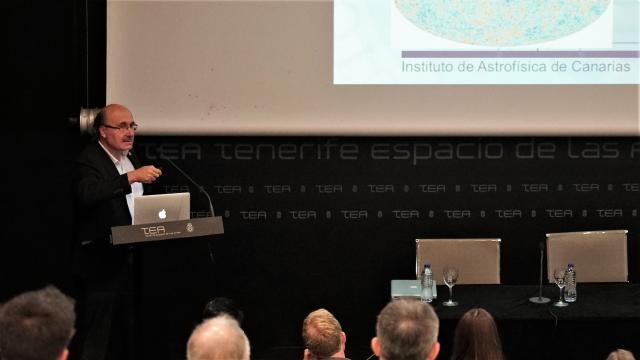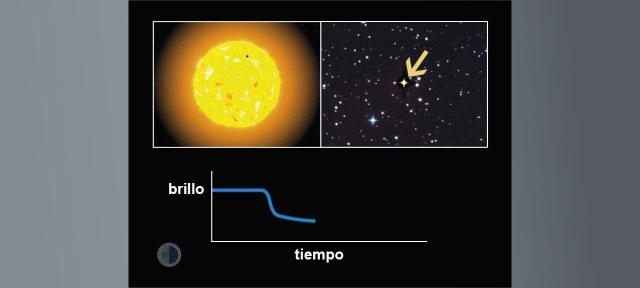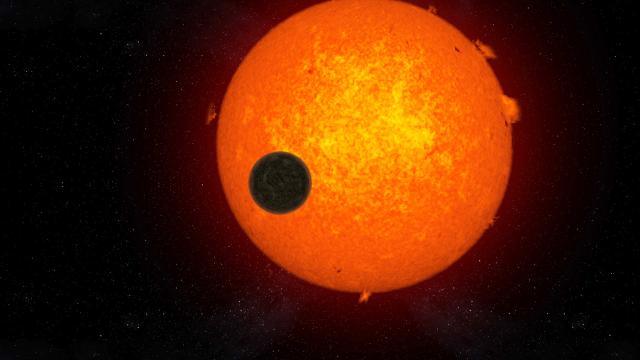Galaxies, fundamental blocks of the Universe, are not distributed homogeneously throughout the available space, but forming a tissue similar to a neural network. They are grouped into Galaxy Clusters as if they were interconnected neurons, leaving immense gaps between them. We are within the Milky Way, a barred spiral galaxy made up of more than 100,000 million stars, within the Local Group. This one, likewise, is linked to the rest of galaxies of the Cumulus of Virgo, composed by hundreds of groups and adding more than 1,000 galaxies. And the Virgo cluster is just one of the 100 million galaxy clusters that make up the observable Universe. A gigantic Cosmos, but at the same time finite, difficult to imagine even with the widest mind.
In the first six images of this exhibition there are hardly any galaxies, since we are located inside the Milky Way, practically in the plane of its disk and halfway between its nucleus and the outer edge. When we look near the galactic plane, the stars, dust and gas that make it up prevent us from seeing objects further away. However, as we look up at this plane, we find places free of obstacles that allow us to enjoy the most distant Universe. The zone of the sky that we can see in this image is near the galactic pole (perpendicular to the plane) in the constellation of Virgo. More than a dozen galaxies can be observed in great detail (elliptical and spirals), as well as visually identifying more than 200 galaxies, marked with small circles. The 18 tagged galaxies are part of the Virgo Cluster, whose total extension exceeds the margins of this image, as it covers an arc of more than eight degrees. All are between 52 and 65 million a.l. away. The subgroup formed by M84, M86, NGC4477, NGC4473, NGC4461, NGC4458, NGC4438 and NGC4435 is known as the "Markarian Chain", all these galaxies sharing a common motion.
The light we are receiving at this time from the Virgo Cluster came from the farthest galaxies shortly before the extinction of the dinosaurs. However, many of the small, visually recognizable galaxies in the image are even further away. Despite showing us a distant universe, it should be noted that it does not represent even 1% of their age (and therefore, radius). With larger telescopes you can see more distant galaxies, whose number increases exponentially as you look further away. The Universe is replete with galaxies in any direction we look, at least for about 200 billion galaxies.
The field photographed in this image (red square) lies between the constellation Virgo and Coma Benerices. There is the galactic pole, a region of the sky suitable for the observation of galaxy clusters.
The image is the result of adding 12 exposures of 900s in each of the 3 wide filters R(red), G(green) and B(blue), plus 43 exposures of 1,200s in the filter L(luminance) with the Astrógrafo Sky Treasure Chest (STC) of the UC3. Author: D. López ©IAC



